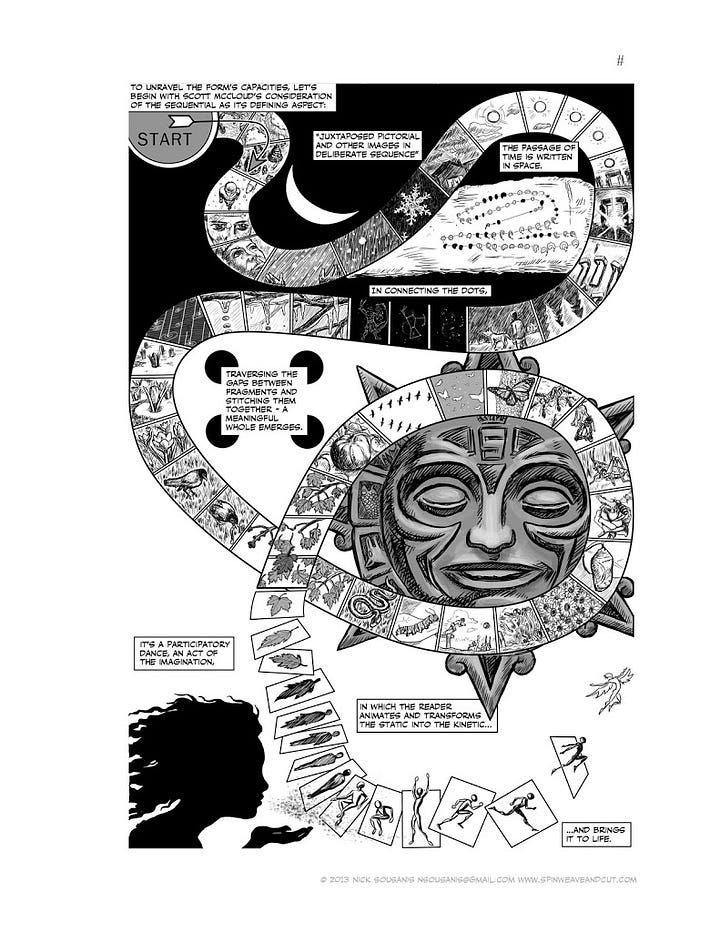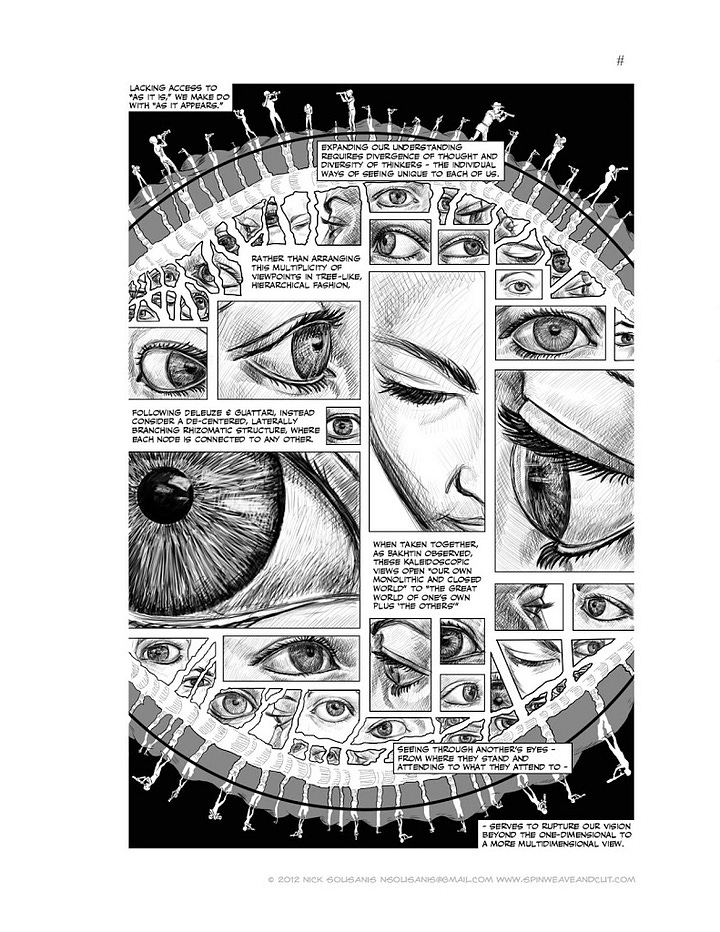Regular listeners will have heard me recommend Nick Sousanis’ wonderful book Unflattening (which we included in The Infinite Loops Canon). For those unfamiliar, we’ve dusted off and edited an old Twitter thread of mine explaining why this is such an important and relevant read.
A reminder - On April 13th, O’Shaughnessy Ventures and Interintellect are co-hosting a Future of Publishing event at Pratt Mansion in NYC.
We’re gathering institutional and startup publishing houses, internet writers, journalists, technologists, authors, and more to rethink and reimagine how ideas are spread now and in the future. We’ve assembled a fantastic group of speakers, including Coleman Hughes, Tara Isabella Burton, Tamara Winter, Sahil Lavingia, and many more!
To buy in-person tickets and for more information on live-streaming, scheduling, speakers, and more, just follow this link. Hope to see you there!


“A quick flip through this book and already its clearly one of the best book recommendations I've ever been given.
Like much of what it explores, this extraordinary book is difficult to categorize. By fusing symbols, images, and language, author/illustrator Nick Sousanis liberates us from “Flatland,” the linear constraints of our language and perception.
Sousanis quotes S.I. Hayakawa: "We are the prisoners of ancient orientations imbedded in the languages we have inherited."
Sousanis’ book provides us with our means of escape. "Text immersed in images" and "pictures anchored by words" launch us out of Flatland into the multi-dimensional, nonlinear world that lies beyond.
I’ve long suggested that our increasingly complexified world demands that we reframe our thinking to become more comfortable with abstraction and layered thinking, a process Sousanis calls “unflattening.” He writes, "The verbal marches along linearly, step by step, a discrete sequence of words, [whereas] the visual, on the other hand, presents itself all-at-once, simultaneous all over (and) relational."
As Sousanis notes, the visual “provides expression where words fail." We've all witnessed the growing frustration of people who feel unheard or misunderstood. Perhaps one solution is to move beyond being mere ‘word thinkers,’ expanding our thoughts to synthesize words, images, symbols, music, and other art forms. Fuller explanations of life may lie beyond the limits of our language, and by unflattening, we can learn to see as if with new eyes —"forging new knowledge by stitching together the dissimilar."
Sousanis reminds the reader that "perception is a dynamic activity...[that is] never static." The process of reframing thought thus becomes a "participatory dance, an act of the imagination, in which the reader animates and transforms the static into the kinetic and brings it to life."
Expanding our perception can help us better understand, connect with, and work with others, something we desperately need in this time of continual and great change. We can begin to understand the many invisible strings that bind us not just to our history but to one another. By unflattening, "we are better able to see these attachments not as constraints but as forces to harness."
Learning how to ‘unlearn’ thoughts and ideas that may have once been helpful but now stand in our way will be a critical skill as we burst into the future. Our capacity for creativity, through which humanity can conjure wonders of everything around us, will only become more important in this time of the Great Reshuffle. By expanding our thinking to use all our dimensions, we can transform old ideas into innovations and solutions and move ourselves and the world to higher, more complete levels of consciousness.
When we truly train ourselves to perceive in this way, "we remind ourselves of what it is to open our eyes to the world for the first time."
